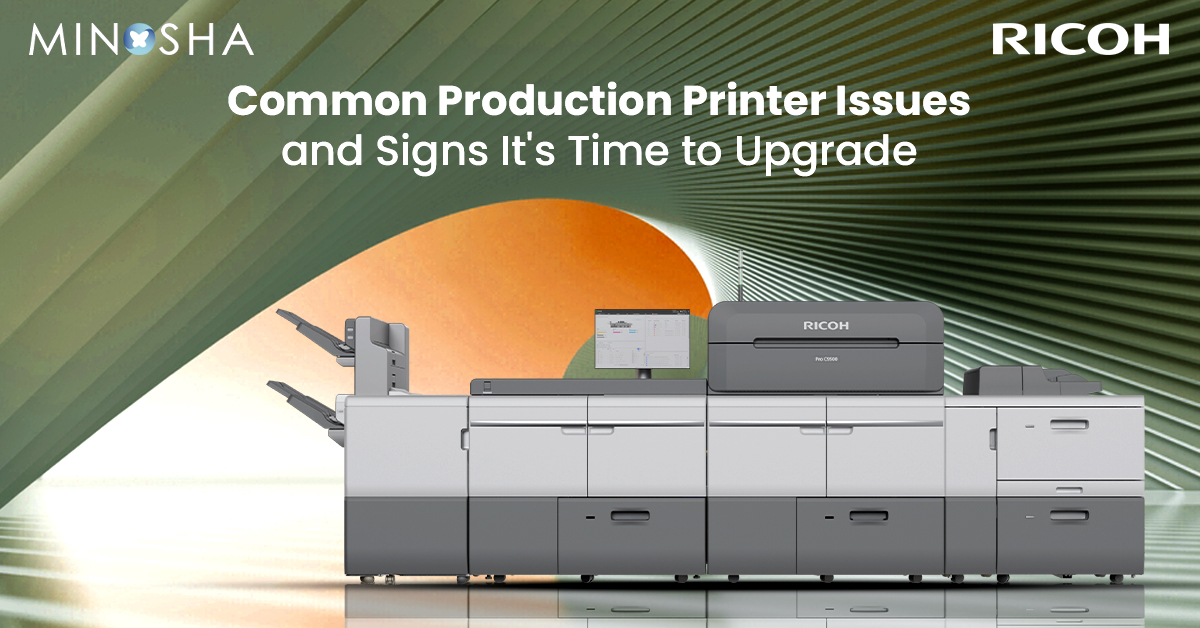
In the world of commercial printing, production printers are the backbone of high-volume, high-quality output. However, as with any technology, these machines can encounter issues over time. Recognizing the signs of wear and understanding when to upgrade can save businesses time, money, and maintain the quality their clients expect.
A production printer is designed for high-speed, high-volume printing tasks, often used in commercial settings where efficiency and quality are paramount. These machines handle large print runs, offer advanced finishing options, and maintain consistent output quality. Brands like Ricoh production printers have set industry standards with their innovative features and reliability.
Over time, even the best machines can exhibit reduced print quality. Signs include faded text, inconsistent color reproduction, and streaks or smudges on the output. These issues can stem from worn-out components, outdated technology, or software glitches.
While occasional paper jams are expected, frequent occurrences disrupt workflow and can damage the printer. Causes range from worn rollers, incorrect paper settings, to outdated firmware.
As print demands increase, older printers may struggle to keep up, leading to slower processing times. This lag can be due to outdated processors, insufficient memory, or software inefficiencies.
Older machines often require more frequent repairs, leading to increased maintenance costs. Parts for outdated models may be harder to find and more expensive, impacting the overall cost-effectiveness.
Advancements in software mean newer file formats and printing protocols. Older printers may not support these, leading to compatibility issues and limiting functionality.
If your business has grown and your current printer can’t handle the increased volume efficiently, it’s a clear sign to consider an upgrade. Modern best production printers offer scalability to match business growth.
Frequent breakdowns not only disrupt operations but also affect client satisfaction. Upgrading to a more reliable machine ensures consistent performance and reduces unexpected downtimes.
Analyzing the total cost of ownership, including maintenance, energy consumption, and supplies, can reveal that an older printer is more expensive to operate than investing in a new, energy-efficient model.
Modern printing demands may require features like variable data printing, advanced finishing options, or integration with digital workflows. If your current printer lacks these, upgrading becomes essential.
Newer printers are designed with sustainability in mind, offering energy-saving modes, reduced emissions, and recyclable components. Upgrading aligns your business with environmental standards and corporate responsibility goals.
Modern printers offer faster processing speeds, higher print volumes, and reduced setup times, leading to increased productivity.
Advancements in printing technology ensure sharper images, consistent color reproduction, and overall superior output quality.
While the initial investment may be significant, reduced maintenance costs, energy savings, and increased efficiency lead to long-term cost benefits.
Offering clients high-quality prints with quick turnaround times can set your business apart in a competitive market.
When considering an upgrade, it’s essential to assess your business needs, print volumes, and desired features. Brands like Ricoh production printers offer a range of models catering to various requirements, ensuring you find a machine that aligns with your operational goals.
Conclusion
Regularly evaluating your printing equipment’s performance and staying updated with technological advancements ensures your business remains efficient and competitive. Recognizing the signs of wear and understanding when to upgrade can lead to improved productivity, cost savings, and enhanced client satisfaction.
Subscribe to our Newsletter for Exclusive Insights and Updates!
